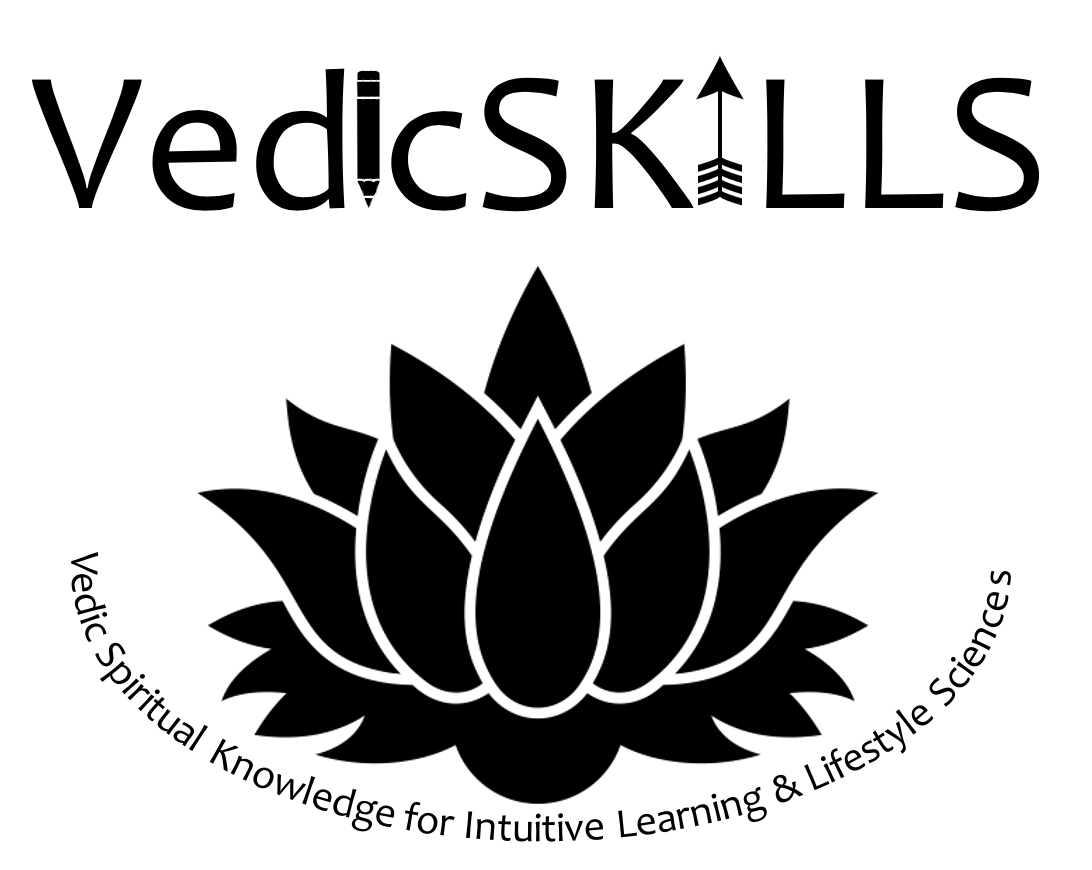Vedic Art of Convincing via Panchanga-Nyaya




Convincing means other person accept your ideas. Although there are many modern books, YouTube and websites explaining art of persuasive communications, Vedic scriptures above all, however, gives the definite and unwavering guidelines on the subject by techniques called Panchang-Nyaya. Of course, we do not deny the contribution of well-known authors on this subject, nevertheless, many a times, they differ in their ideas. Therefore, you as newcomer, may get simply confused and not know for certain what path you should follow. On the other hand, however, ancient principles written in Vedic scriptures do not change with time, they are flawless and complete. It is because Vedas are originating from perfect source free from any human defects God.
Whether you are a student, businessman, administrator, professional, housewife, even scientist or anyone in any field, you need to communicate smoothly without confusing or agitating your relationships. It is said, “A personal convinced against his will is same person still”. Therefore you need to consider positively the situation of your audience – respecting his stature, knowledge, intelligence, doubts etc. Thus, you should be able to properly relate with your audience in very personal way – whether one individual or many. Even when they are either talking to you, watching you, listening to you or even reading your writings. Communication is generally done either via through speech or text. Text is nothing but written voice. Therefore, the principles of effective communications to present your ideas to another either through speech or written text are same.
Firstly, whatever you have got to say, should be convincing to other person. Your message must be heard with open mind. That is your logic. Secondly, the language should be clean and clear. The emphasis of your convictions should be rightly placed. That is your grammar. And finally, your audience should be able to relate your message with his existing experiences and in nature, situations or people around him. He should be able to correlate with what he already knows and therefore tune in to his mind. You may use metaphors. That is your rhetoric. Therefore, a good communication will have three parts: logic, grammar and rhetoric.
In this essay, we are dealing with logic only but that is heart of good communication. In Vedic or Sanskrit, logic is called ‘nyaya’. The standard system in Vedic scriptures is called Panchang-Nyaya – principles of five-fold logic. Panchanga – panch means five and anga means parts; therefore it literally means five parts.
You need to closely know convictions of your audience well beforehand. Overall your message should communicate one idea at a time but that one will have series of many ideas overall. The main difficulty faced during the thought process is the mind’s inability to focus on more than one idea or visaya at a time. But you cannot present many ideas simultaneously to your audience. There is a need to separate the different thinking tasks in order to remove confusion, enabling us to direct our attention to one aspect a time, thus creating a structure, which allows free, focused and progressive flow of thought. Mind cannot accept many ideas at a time but one. Each idea have to deal with mind of your audience separately.
To any particular idea that you are sharing at any given time, the mind of your audience will be either to accept or reject. Why rejection? Because they have doubts. Therefore, they will have two state of mind: either open mind to hear or have doubts. Therefore, panchanga-nyays system have two forms: one while dealing with doubts and other when a person is open to hear your ideas. If your audience is open minded, then five different parts of Vedic presentation will be: pratijna, hetu, udaharana, upnaya and siddhnanth / nigamana meaning thesis, reasons, examples, further explanation and conclusion respectively. If, however, your audience is having doubts, then they are: visaya, samsaya, purva-paksa, uttaram and nirnaya meaning thesis, doubt, anti-thesis, reply to objections and correct conclusion / synthesis.
One set of five parts in either case is called adhikarana or topic. One adhikarana is presenting one idea. One idea can be just one sentence, one phrase or even one word. To convince this one idea, one required adhikarana can form one paragraph. If, however, this one idea is part of bigger idea, then many ideas supporting one idea will form one essay or one chapter. Therefore, one chapter will be combination of multiple adhikaranas but logically arranged one after another. In same way, your much bigger idea can form a book and that is combination of many chapters logically places side by side. Therefore, whether you are writing a book, an essay or a paragraph or even a sentence, you should have one central idea very clear.
We will have a look about one adhikarana in detail and understand terminology of each item of panchanga-nyaya but for the time being, let’s look at bigger picture. When connecting one idea to another, you need to be consistent that there is no conflict in what proceeds and what follows. This is called Sangati. The sangati, which binds one Adhikarana with another, is of six sorts: 1. Aksepa or objection 2. Drstanta or illustration 3. Pratidrstanta or counter-illustration 4. Prasanga or incidental illustration 5. Utpatti or introduction 6. Apavada or exception.
Overall there should be consistency or sangati – the agreement with principle proposition of the work by other parts of the work and connection between the various sections. Multiple adhikaranas with one central idea becomes a section or pada. Consistency within the paragraphs/sub-section is called Pada-sangati. Many pada makes a chapter or adhayaya. Consistency within the section is called Adhyaya-sangati. Multiple adhyaya form a book or sastra and in same way, consistency within the work is called Sastra-sangati.
Apart from the core contents of your presentation, you will have preface. Following the time-honoured Vedic practice used for the development of teaching instruction, a work / book / discourse should begin with an appropriate preface / Manglacarana. The Manglacarana is of three varieties or any combination: 1. Namas-kriyatmaka– paying obeisances to one’s teacher(s), worshipable deity, or both. 2. Asir-vadatmaka – praying to the Lord for His blessings, bestowing blessings upon the readers, or exclaiming “All glories to the Lord!” 3. Vastu-nirdesatmaka – summarizing the subject matter of the book.
Following Manglacarana, ‘Introduction’ of the work will then go on to describe four essential elements of the work, called anubandha-catustaya, as described by Sri Kumarila Bhatta in his Sloka-vartikka:
adhikare ca sambandho vinayac ca prayojanam
avasyam eva vaktavyaa catradau tu catunoayam
The introduction of a work must delineate four items: 1. Adhikari – qualifications of the person who may study the book, 2. Sambandha – connection between the book and its subject, 3. Visaya – the subject itself, 4. Prayojana – what the reader will gain by reading the book and following the path it prescribes.
The purpose of delineating these four items is to create an interest in the mind of the reader or student, as Sri Kumarila Bhaooa states in his Sloka-varttika (1.1.17):
siddhartham jiata-sambandham crotum pravartate
sastradau tena vaktavyau sambandha sa prayojanau
Only after knowing the relation of the book with the subject matter (sambandha), and the purpose to be achieved (prayojana), is one inspired to study a book. Therefore, sambandha and prayojana must be stated at the opening. As different qualifications are needed in achieving different goals, it is important to first establish the qualifications needed to study (adhikare) and the means of evaluation. By making clear the relationship (sambandha) between the book, the subject matter, the qualified student, and the goal, continuity and sequence is provided for the student to integrate what might otherwise appear as isolated learning experiences. One must see that the learning experiences of the subject (vinaya), bring about the attainment of the purpose (prayojana) the study seeks to attain.
Critics of the work is called varttika and it is explained as follows in Vedas:
uktanuktaduruktanam cinta yatra pravarttate
tam gantham varttikam prahuh varttikajnah vicaksanah
ukta-anukta-duruktanam—what has been said, not said, and inadequately said; cinta—an analysis; yatra— where; pravarttate—is present; tam—that; grantham—work; varttikam—as varttika; prahuh—call it; varttikajh—those knowers of varttika literature; vicaksanah—experts.
“The experts who know varttika define it as a work wherein there is an analysis of what was said, not said and improperly said in any original work.”
Srila Bhaktivinoda Thakura explains the proper mode of thinking and study. He says:
“….The student is to read the facts with the view to create, and not with the object of fruitless retention. Students, like satellites, should reflect whatever light they receive from authors and not imprison the facts and thoughts just as the magistrates imprison the convicts in the jail!
Thought is progressive. The author’s thought must have progressed in the reader in the shape of correction or development. He is the best critic who can show the further development of an old thought; but a mere denouncer is the enemy of progress and consequently of Nature. “Begin anew,” says the critic, “because the old masonry does not answer at present. Let the old author be buried because his time is gone.” These are shallow expressions. Progress certainly is the law of nature and there must be corrections and developments with the progress of time. But progress means going further or rising higher. Now if we are to follow our foolish critic, we are to go back to our former terminus, and another critic of his stamp will cry out, “Begin anew, because the wrong road has been taken!” In this way our stupid critics will never allow us to go over the whole road and see what is in the other terminus. Thus, the shallow critic and the fruitless reader are the two great enemies of progress. We must shun them.
The true critic, on the other hand, advises us to preserve what we have already obtained, and to adjust our race from that point where we have arrived in the heat of our progress. He will never advise us to go back to the point whence we started, as he fully knows that in that case there will be a fruitless loss of our valuable time and labor. He will direct the adjustment of the angle of the race at the point where we are. This is also the characteristic of the useful student. He will read an old author and will find out his exact position in the progress of thought. He will never propose to burn the book on the ground that it contains thoughts which are useless. No thought is useless. Thoughts are means by which we attain our objects. The reader who denounces a bad thought does not know that a bad road is even capable of improvement and conversion into a good one. One thought is a road leading to another. Thus, the reader will find that one thought which is the object today will be the means of a further object tomorrow. Thoughts will necessarily continue to be an endless series of means and objects in the progress of humanity….” (The Bhagavat)
Of course, your ultimate conclusion must be perfect either dealing with conclusive truth of phenomenal world or metaphysical reality. It must come from perfect sources. Every human, however, is not perfect. Every human being have four defects: 1. Imperfect senses, 2 Tendency to commit mistakes, 3. Tendency to cheat and 4. Tendency to be illusion. So, how can one have perfect knowledge? Perfect sources are Vedic text for they are coming from perfect person, Supreme Person, Personality of Godhead- Sri Krsna. His literary incarnation, Srila Vyasdeva written the Vedic text to guide the human society for the path of perfection, to realize ultimate goal of life.
